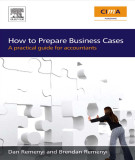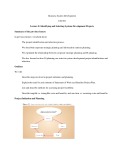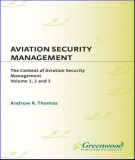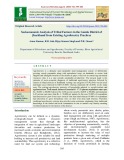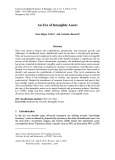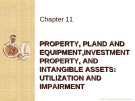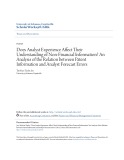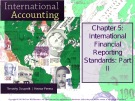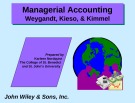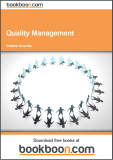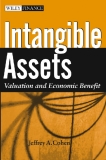
Intangible benefits
-
Ebook "How to prepare business cases: A practical guide for accountants" guides accountants through the processes they need to understand to develop and present a high-risk business proposal with success. This compact guide outlines every issue surrounding a business case, from profit benefits and beyond.
 269p
269p  tuongnhuoclan
tuongnhuoclan
 28-11-2023
28-11-2023
 7
7
 3
3
 Download
Download
-
Lecture Intermediate accounting - Chapter 11: Property, plant, and equipment and intangible assets: utilization and impairment. Chapter 11 completes the discussion of accounting for property, plant, and equipment and intangible assets by addressing the allocation of the cost of these assets to the periods benefited by their use. Expenditures subsequent to acquisition and impairment are also covered in this chapter.
 20p
20p  haojiubujain05
haojiubujain05
 27-07-2023
27-07-2023
 2
2
 2
2
 Download
Download
-
Lecture Managerial Accounting - Chapter 12: Planning for Capital Investments. After studying this chapter, you should be able to: Discuss capital budgeting evaluation, and explain inputs used in capital budgeting; describe the cash payback technique; explain the net present value method; identify the challenges presented by intangible benefits in capital budgeting; describe the profitability index; indicate the benefits of performing a post-audit; explain the internal rate of return method; describe the annual rate of return method.
 62p
62p  runordie4
runordie4
 27-06-2022
27-06-2022
 14
14
 3
3
 Download
Download
-
In this chapter: Describe steps involved in project initiation and planning; explain the need for and contents of statement of work and baseline project plan; list and describe methods for assessing project feasibility; describe tangible vs. intangible costs and benefits, and one-time vs. recurring costs and benefits.
 9p
9p  larachdumlanat124
larachdumlanat124
 28-11-2020
28-11-2020
 11
11
 4
4
 Download
Download
-
After studying this chapter you will be able to: Describe steps involved in project initiation and planning; explain the need for and contents of statement of work and baseline project plan; list and describe methods for assessing project feasibility; describe tangible vs. intangible costs and benefits, and one-time vs. recurring costs and benefits.
 32p
32p  larachdumlanat124
larachdumlanat124
 28-11-2020
28-11-2020
 10
10
 2
2
 Download
Download
-
Enterprise Resource Planning (ERP) system is one of the most popular forms of IT for businesses at present. Deriving from efforts to rationalize lead times and possession stock costs, the 80’s manufacturing resource planning (MRP II) is developed into ERP system considered as the standard that integrates business processes throughout the organization, which in turn enhances operational efficiency (Akkermans, Bogerd, Yücesan, & Van Wassenhove, 2003; Davenport, 1998). Callaway (1999) states that the ERP system promises to achieve benefits in both tangible (e.g.
 270p
270p  kequaidan6
kequaidan6
 15-07-2020
15-07-2020
 13
13
 0
0
 Download
Download
-
Ebook Aviation security management: Part 1 present content the early history of aviation security practice; aviation security practice and education: 1968 onward; air transportation in evolving supply chain strategies; tangible and intangible benefits of transportation security measures; the human element in aviation security; the international civil aviation security program established by ICAO.
 505p
505p  kethamoi6
kethamoi6
 01-07-2020
01-07-2020
 16
16
 2
2
 Download
Download
-
Agroforestry is a dynamic and sustainable land management system of deliberately growing woody perennials along with agricultural crops on farmlands to secure both tangible and intangible benefits to the farmers.It plays a vital role in conserving our natural resources, thus it is a step towards sustainable productivity. The present study is the outcome of socio-economic diagnosis of traditional agroforestry practices followed by farmers in Gumla district of Jharkhand. Among cast categories ST (92.50%) was the most dominant caste followed by GEN (5.00%) whereas minimum SC (0.
 10p
10p  chauchaungayxua5
chauchaungayxua5
 05-05-2020
05-05-2020
 17
17
 1
1
 Download
Download
-
This work intent to discuss the contributions, productivity and economic growth, and challenges of intellectual assets. Intellectual assets do not have a real physical presence. They are resources used or employed to add a value to the business entity. Likewise tangible assets and intangible assets are also provide future benefit and play a significant role for success of the business.
 10p
10p  cothumenhmong4
cothumenhmong4
 24-03-2020
24-03-2020
 12
12
 1
1
 Download
Download
-
There is need of improved and innovative technology to raise production and productivity for enhancing efficiency of agriculture in NER. The Tribal Sub-Plan (TSP) is a strategy for Socio-economic development and livelihood security of tribal people of Meghalaya. The study was conducted to assess the socio-economic status of the respondents and to analyze the tangible and intangible benefits of the interventions in Rongram block of West Garo Hills distrct of Meghalaya. A total sample of 120 respondents was drawn from the different technological components.
 10p
10p  cothumenhmong3
cothumenhmong3
 22-02-2020
22-02-2020
 20
20
 1
1
 Download
Download
-
Chapter 11 completes the discussion of accounting for property, plant and equipment, investment property and intangible assets by addressing the subsequent valuation and allocation of the value of these assets to the periods benefitted by their use. Expenditures subsequent to acquisition and impairment are also covered in this chapter.
 61p
61p  thuongdanguyetan20
thuongdanguyetan20
 18-02-2020
18-02-2020
 32
32
 4
4
 Download
Download
-
This study examines whether analyst experience affects the relation between patent information and analyst forecast errors. U.S. Generally Accepted Accounting Principles require that firms expense all in-house research and development (R&D) costs. This means that even when R&D activities produce intangible assets with future economic benefits, firms cannot capitalize R&D costs as assets. Consequently, financial statements are largely deficient in the information they provide regarding the output of R&D activities.
 146p
146p  fugu897
fugu897
 03-07-2019
03-07-2019
 18
18
 2
2
 Download
Download
-
Chapter 5 - International financial reporting standards: Part I. This chapter describe and apply the requirements of IFRS related to the financial reporting of current liabilities, provisions, employee benefits, share-based payment, income taxes, revenue, and financial instruments; explain and analyze the effect of major differences between IFRS and U.S. GAAP related to the financial reporting of current liabilities, provisions, employee benefits, share-based payment, income taxes, revenue, and financial instruments.
 38p
38p  nomoney2
nomoney2
 10-02-2017
10-02-2017
 36
36
 2
2
 Download
Download
-
Chapter 10 - Capital budgeting. After studying this chapter, you should be able to: Discuss the capital budgeting evaluation process and explain what inputs are used in capital budgeting, describe the cash payback technique, explain the net present value method, identify the challenges presented by intangible benefits in capital budgeting,
 54p
54p  estupendo4
estupendo4
 24-08-2016
24-08-2016
 30
30
 2
2
 Download
Download
-
This study guide is designed to provide an overview of the key elements, important historical context and current debates in the field of Quality Management. It aims to give a coherent view of the underlying principles of quality management, and how these relate to practical application in a range of organizations. The tools and techniques which support the principles are not covered in detail in this guide, More information on these can be found in the companion guide: “Six Sigma: Principles and Practices” also available at Bookboon.com....
 192p
192p  tuanloc_do
tuanloc_do
 04-12-2012
04-12-2012
 109
109
 19
19
 Download
Download
-
What investors must realise is that despite their intangible nature, the most valuable aspects of real estate assets are those that provide the best possible human outcomes into the future. These benefits build demand and result in higher and more sustained returns This alone elevates the importance of social sustainability in the real estate mix, and is bringing a particular focus to construction and management standards as a major factor in improving the worth of asset holdings.
 8p
8p  quaivatxanh
quaivatxanh
 01-12-2012
01-12-2012
 69
69
 6
6
 Download
Download
-
“Cohen has produced a broad, engaging, and admirably clear discussion of intangible assets and their valuation. There is useful background here for thinking about diverse areas of the law—in addition to obvious applications in intellectual property, corporate, and securities law, one thinks of, for example, administrative law, where debates about cost-benefit analysis ranging over intangible (and often ephemeral) assets are both ubiquitous and contentious.
 178p
178p  leetinh
leetinh
 29-10-2012
29-10-2012
 92
92
 15
15
 Download
Download
CHỦ ĐỀ BẠN MUỐN TÌM








